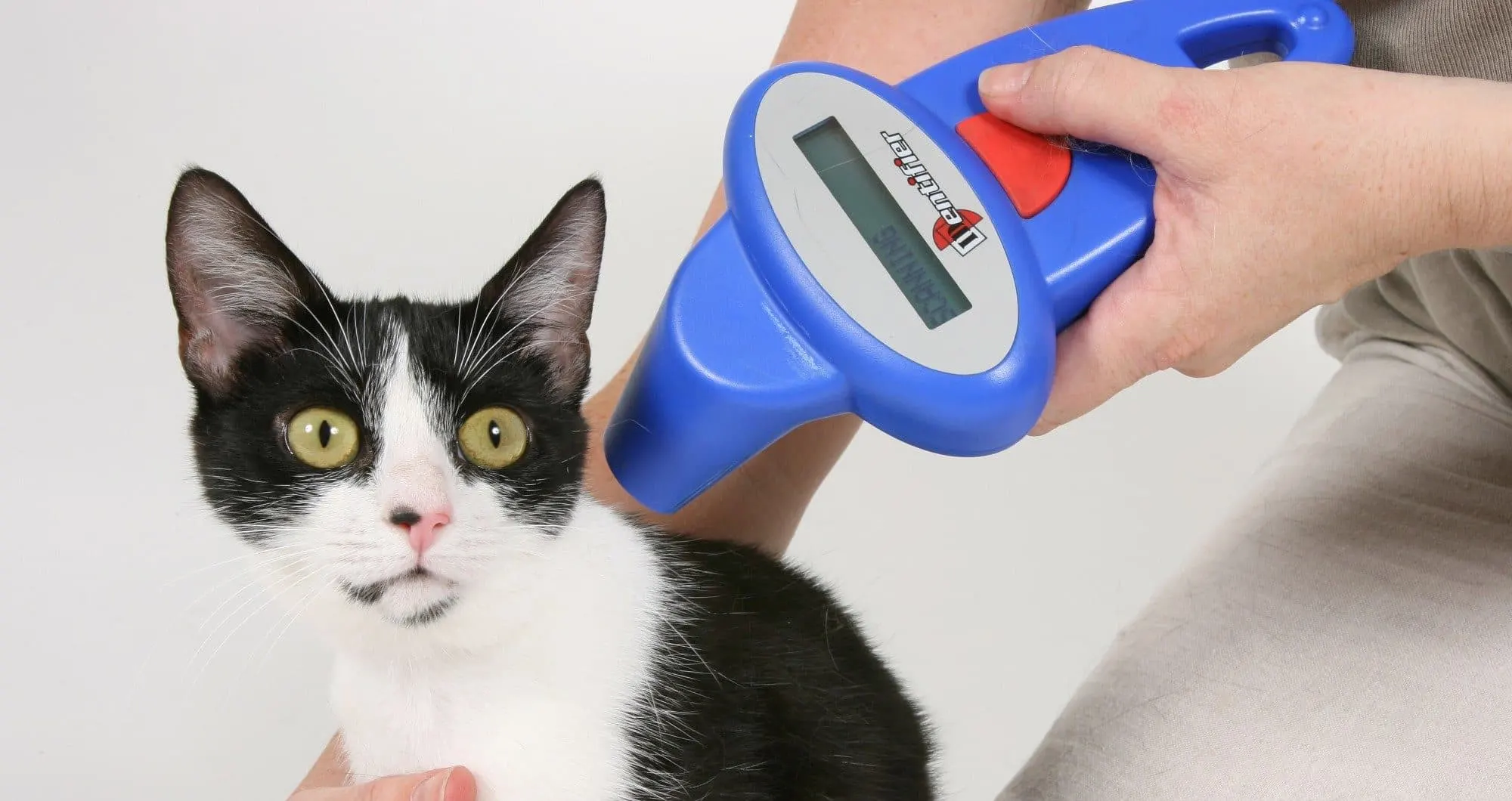Losing your cat can be a stressful and traumatic event. Cats are notoriously sneaky about darting out of the house.
If you’re lucky, you’ll catch your kitty quickly before he or she gets too far. However, not everyone is that lucky – there are ways to improve your chances of being reunited with your kitty.
Microchipping is one of the best ways to retrieve your lost cat. Keep reading to learn why microchipping could save your cat’s life.
What is microchipping?
Microchipping is a procedure in which a small computerized chip is implanted under a cat’s skin and used for identifying the cat and its owner’s contact information.
The chip is implanted by a veterinarian with a syringe. The chip is no bigger than a grain of rice and the implanting process is short and similar to that of a vaccine.
Unlike collars or ID tags, microchips cannot fall off.
The microchip is coded with a unique identification number for each cat. This ID is then registered and the contact information of the owner is added.
When trying to identify a cat, a special scanner is used to scan the chip and transmit the identification number back to the scanner with a radio signal.
When the cat’s unique ID number is recognized by the scanner, all of they cat’s contact information is available and the owner can easily be reunited with their cat.
Since a microchip provides the owner’s contact information, it is important to keep your contact information up to date in the registry.
Is microchipping safe?
Yes, the microchip is inserted by a vet in a safe and sterile environment. It is similar to getting a vaccine. There is no known research to show harmful side effects associated with microchipping.
Is microchipping painful?
Although the needle for insertion is slightly bigger, it is not more painful than any other injection. It is a brief injection and does not require anesthesia or surgery.
If your cat needs to be neutered or spayed in the near future, the microchip can be implanted while the cat is under anesthesia.
SURVEY: Do You Consider Cats Family?
Your opinion matters!
Where can I get my pet microchipped?
Almost all veterinarians offer microchipping. Petsmart, Petco, and animal shelters might offer microchipping services depending on your location.
Do some research locally – there might also be more affordable options nearby. Make sure whoever microchips your cat not only registers the microchip, but also provides you with the microchip ID number.
**IMPORTANT** Just getting the microchip is not enough – you need to register the microchip with the microchip company for it to work.
How do I get my cat’s microchip registered?
Your veterinarian or microchip provider should give you paperwork to fill out which needs to be sent to the microchip registry company. This option might be available online as well.
Some companies offer a one-time registration fee while others charge an annual fee. You should receive a tag with the cat’s microchip number and the registry’s phone number.
Double check and ask your microchip provider if your cat was successfully registered.
How much does microchipping cost?
On average, microchipping costs anywhere from $45-$50. Just remember that you can’t put a price on being reunited with your lost cat. Microchipping is worth every penny.
**FUN FACT** Some cats in shelters come already microchipped! This is just another reason to adopt from shelters.
Do microchips use GPS?
It is important to understand that a microchip is not a GPS device. You cannot track your cat’s location in real time. Microchips are an identification device, meaning they can only identify the cat and the owner’s contact information.
Why should I microchip my cat?
A combination of a collar and ID tag with microchipping is the best way to improve your chances of being reunited with your lost or stolen cat.
It is also the only way to prove the cat belongs to you. Collars and ID tags can be removed – microchips are tamperproof. However, this doesn’t mean you shouldn’t use a collar or tag. Both are necessary.
Can a microchip replace my cat’s collar and tag?
No! It is very important for your cat to wear an ID tag at all times. ID tags on collars are your first line of defense if your cat is lost.
Most lost cats are found by average civilians, and they will be looking for an ID tag with your contact information on it.
Chances are, they probably won’t go the vet and see if the cat is microchipped. ID tags are the easiest way for people to identify your cat and get in contact with you.
Microchips are the second line of defense. They add an extra layer of security.
How old does my cat need to be to get microchipped?
Kittens need to be at least 5 weeks old. It’s recommended to wait until the kitten is being neutered or spayed to microchip them simultaneously.
How long do microchips last?
Microchips last 25 years on average.
How successful are microchips?
A study conducted by the Ohio State University of Veterinary Medicine found that approximately 63% of microchipped lost cats that were brought to shelters were reunited with their owners.
According to the study, there were microchipped cats that were not reclaimed by their owners because owners incorrectly registered their cat’s microchip number or did not update their contact information.
This demonstrates the importance of correctly registering the microchip and keeping contact information updated.
Overall, microchipping is an excellent layer of security for improving the chances your lost cat will be found.
Just remember to make sure your cat’s microchip number is registered, keep your contact information up to date in the registry, and have your cat wear a collar with an ID tag.
QUESTION: Is your cat microchipped?


